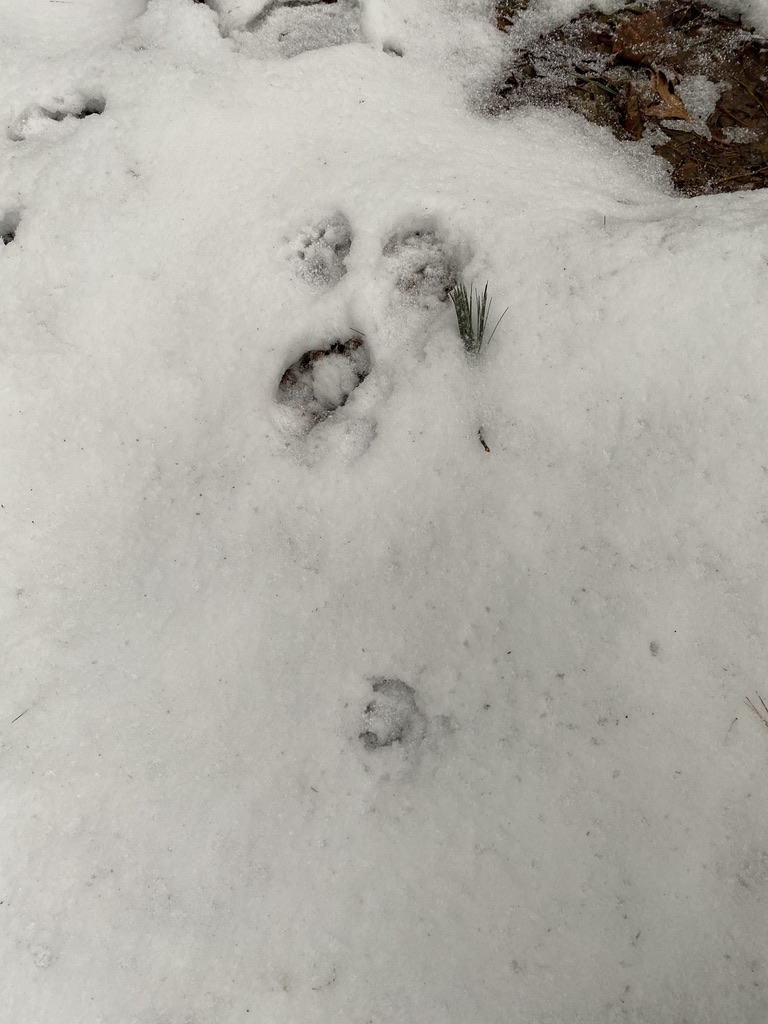
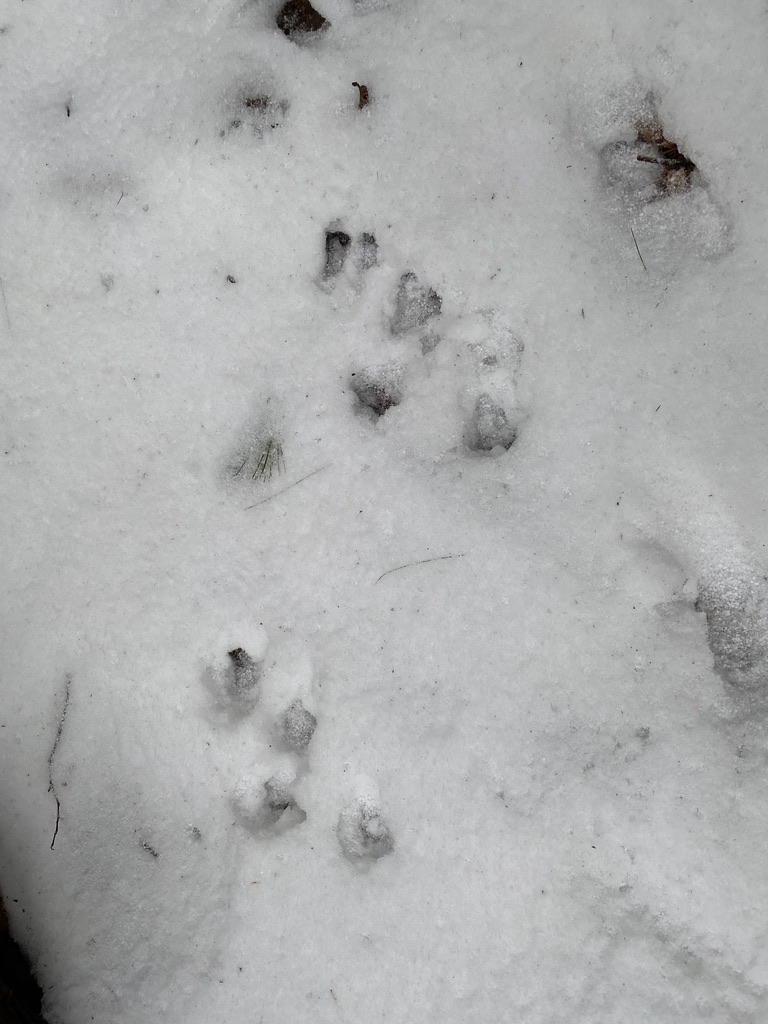
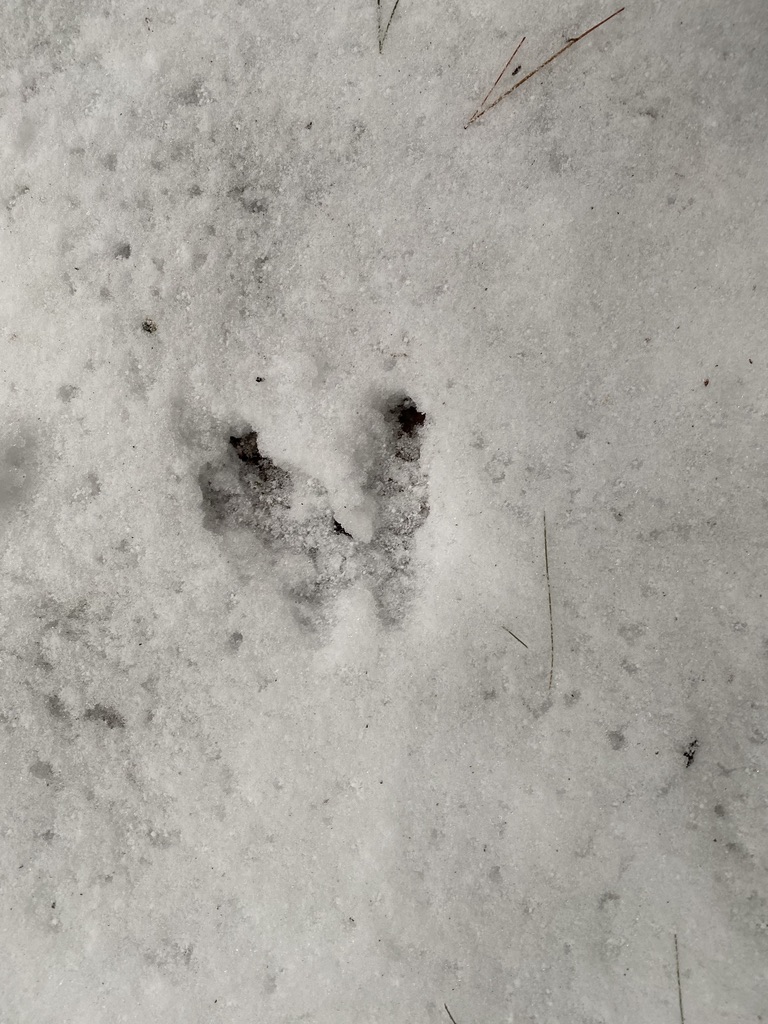
On my trip to my phenology site, I came across various tracks. While most of them were human made, I was able to determine a rough estimate of three different types of animal tracks. The first, although covered with fresh snow was a clear domesticated dog track. The diagonal gait was a clear give away, in addition with the paw print, which consisted of four toes and an X across the large paw pad. This track also showed claws in a “pointed out” shape, leading to the identification of a domesticated dog. The second set of tracks I came across were slightly more difficult to make out. The gait appeared to be a gallop, which led me to believe I was dealing with a squirrel. After looking more closely, the front and back paw prints were not identical. The front paws were more extended, while the backs were smaller with less pressure placed on them. Due to the minimal detail visible in these tracks, I was unable to determine if they belonged to a red or gray squirrel. The third track was the most difficult to determine. The image and track displayed long front paws, larger than the front paws of the squirrel, and small back paws. The tracks, along with what I guessed to be a galloping or hopping gait led be to believe that these tracks were made by a quickly moving snowshoe hare or a cottontail rabbit. I did not include a ruler in my images, (as I believed it would take away from the tracks), however I did record the measurements of the three individual tracks. The tracks left by the domesticated dog were roughly 8 inches apart, the stride of the squirrel was roughly 2 inches, and the stride of the rabbit was about 3 inches.
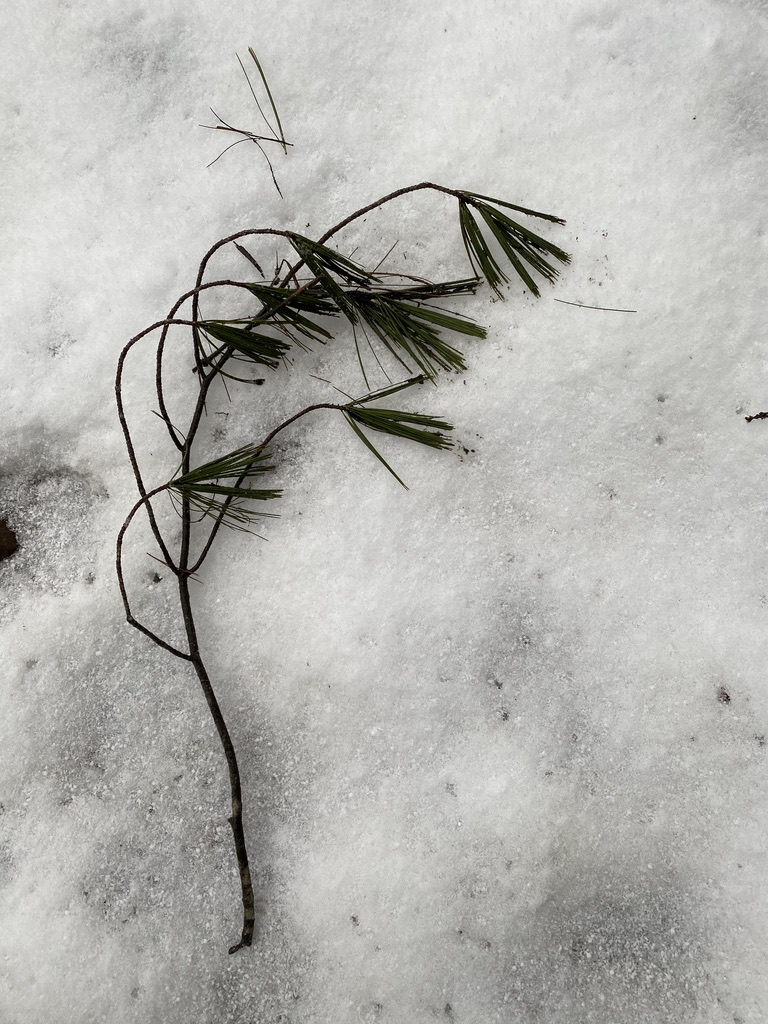
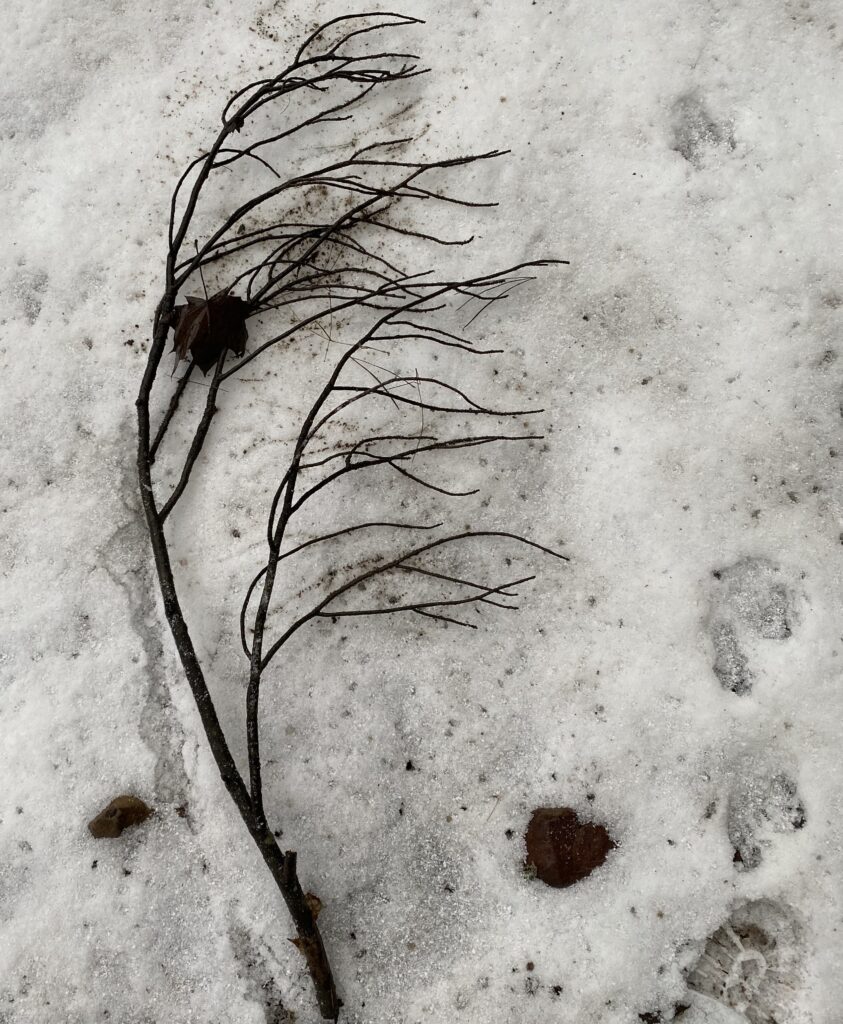
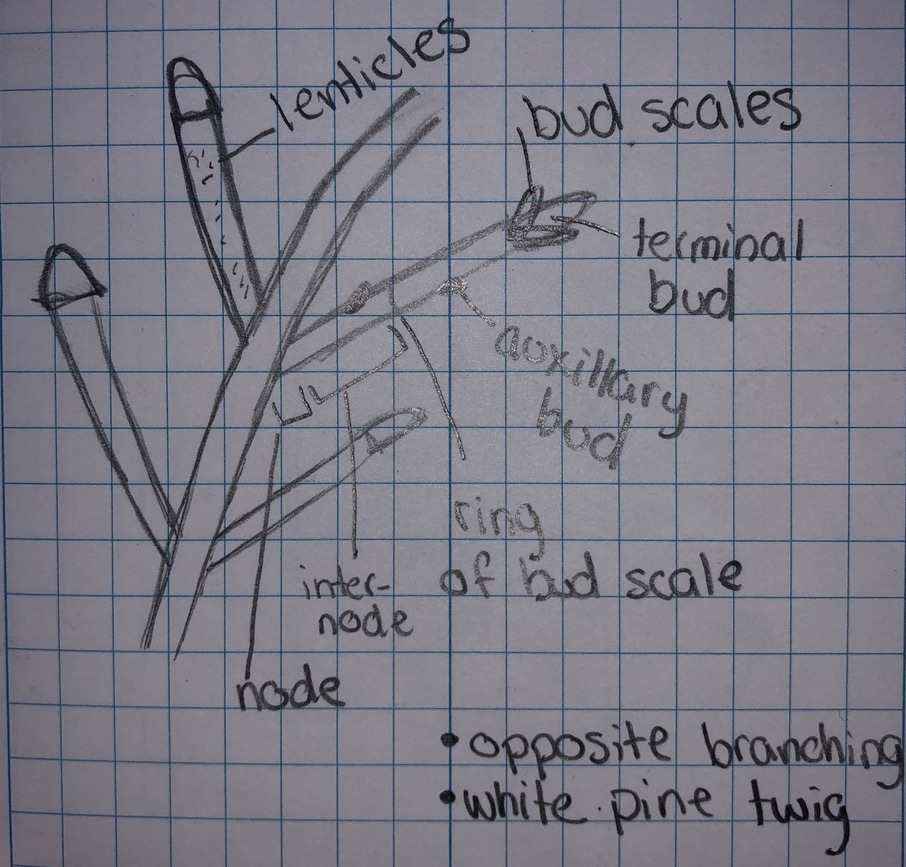
During the second part of my visit, I took a closer look at different tree twigs and was able to make a list of four different identifications. I identified the alternate branching and single bud of a Beech twig, the opposite branching with brown buds on brown bark of the Sugar Maple, the alternate branching with yellow, granular buds of the Bitternut Hickory, and lastly, the opposite branching of a broken twig from a White Pine branch.
Since my last visit to my site, many phenological changes have taken place. The first major difference is the presence of medium snow fall and snow build up. The snow is covering roughly ¾ of the small stream, ceasing water flow and causing freezing of the top layer of the water. The previous visit included a dense amount of leaf litter. However, the leaf litter now has mostly decomposed except for a small amount which blends in with the mud. The tree cover in this area is non-existent due to the fact that there are no evergreens in this patch of land, only Maples and Beeches. I located the squirrel tracks directly on my site, indicating that this is a travel route for these critters as they search for a water source and previously hidden stashes of food.

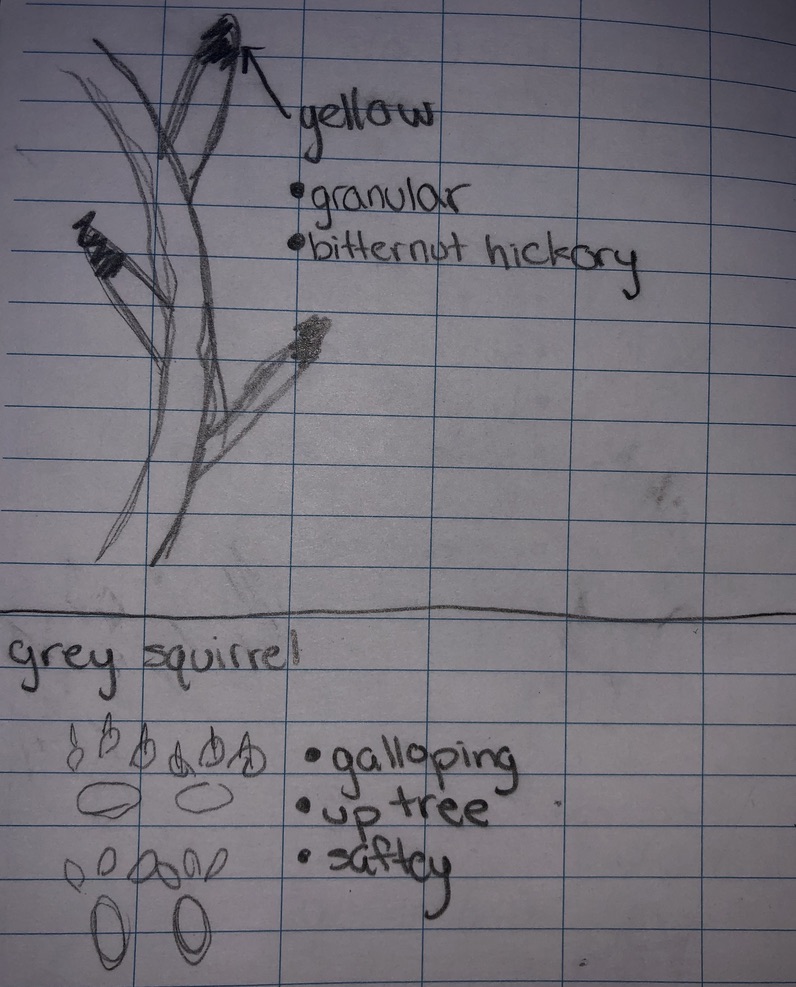

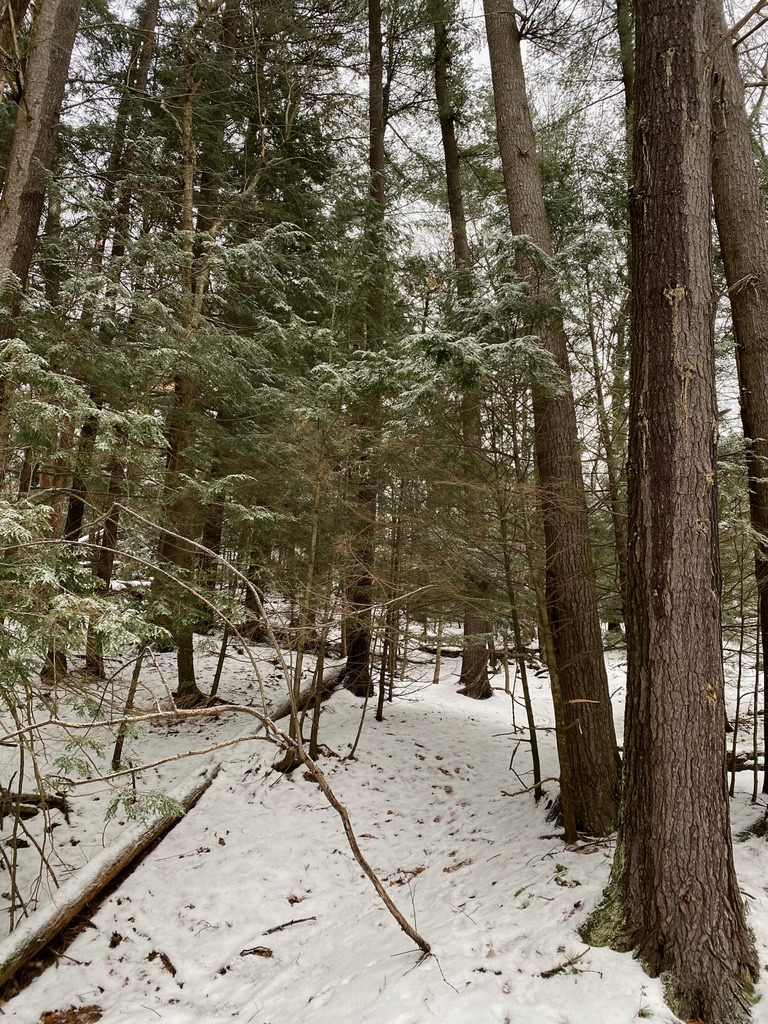
Most of the identification knowledge was learned in the NR lecture on winter animal tracking.
Levine, Lynn. Mammal Tracks and Scat Life-Size Pocket Guide . Heartwood Press, 2014.